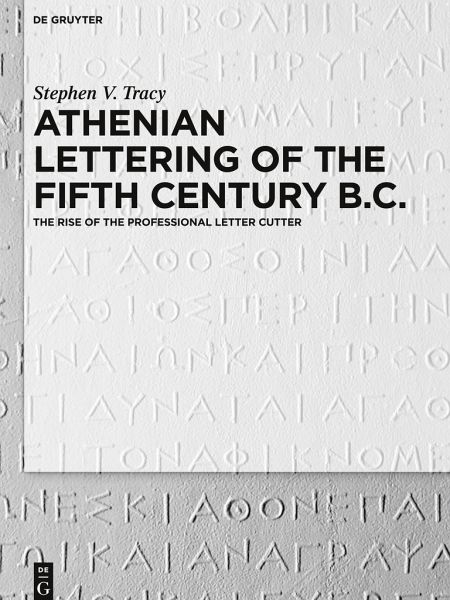
Athenian Lettering of the Fifth Century B.C.
The Rise of the Professional Letter Cutter
Versandkostenfrei!
Versandfertig in 6-10 Tagen
164,95 €
inkl. MwSt.
Weitere Ausgaben:

PAYBACK Punkte
0 °P sammeln!
This book has chapters on methodology, on the writing of the first decrees and laws of the years ca. 515 to 450 B.C., on unique examples of writing of ca. 450 to 400, on the inscribers of the Lapis Primus and Lapis Secundus (IG I3 259-280), and on those of the Attic Stelai (IG I3 421-430). These are followed by studies of 11 individual cutters arranged in chronological order.This study brings order to the study of hands of the fifth century by setting out a methodology and by discussing the attempts of others to identify hands. Another aim is to bring out the individuality of the writing of th...
This book has chapters on methodology, on the writing of the first decrees and laws of the years ca. 515 to 450 B.C., on unique examples of writing of ca. 450 to 400, on the inscribers of the Lapis Primus and Lapis Secundus (IG I3 259-280), and on those of the Attic Stelai (IG I3 421-430). These are followed by studies of 11 individual cutters arranged in chronological order.
This study brings order to the study of hands of the fifth century by setting out a methodology and by discussing the attempts of others to identify hands. Another aim is to bring out the individuality of the writing of these early inscribers. It shows that from the beginning the writing on Athenian inscriptions on stone was very idiosyncratic, for all intents and purposes individual writing. It identifies the inscribing of the sacred inventories of Athena beginning about 450 B.C. as the genesis of the professional letter cutter in Athens and traces the trajectory of the profession. While the dating of many inscriptions will remain a matter for scholarly discussion, the present study narrows the dates of many texts. It also pinpoints the origin of the mistaken idea that three-bar sigma did not occur on public documents after the year 446 in order to make those who are not expert more aware that this is not a reliable means of dating.
This study brings order to the study of hands of the fifth century by setting out a methodology and by discussing the attempts of others to identify hands. Another aim is to bring out the individuality of the writing of these early inscribers. It shows that from the beginning the writing on Athenian inscriptions on stone was very idiosyncratic, for all intents and purposes individual writing. It identifies the inscribing of the sacred inventories of Athena beginning about 450 B.C. as the genesis of the professional letter cutter in Athens and traces the trajectory of the profession. While the dating of many inscriptions will remain a matter for scholarly discussion, the present study narrows the dates of many texts. It also pinpoints the origin of the mistaken idea that three-bar sigma did not occur on public documents after the year 446 in order to make those who are not expert more aware that this is not a reliable means of dating.













